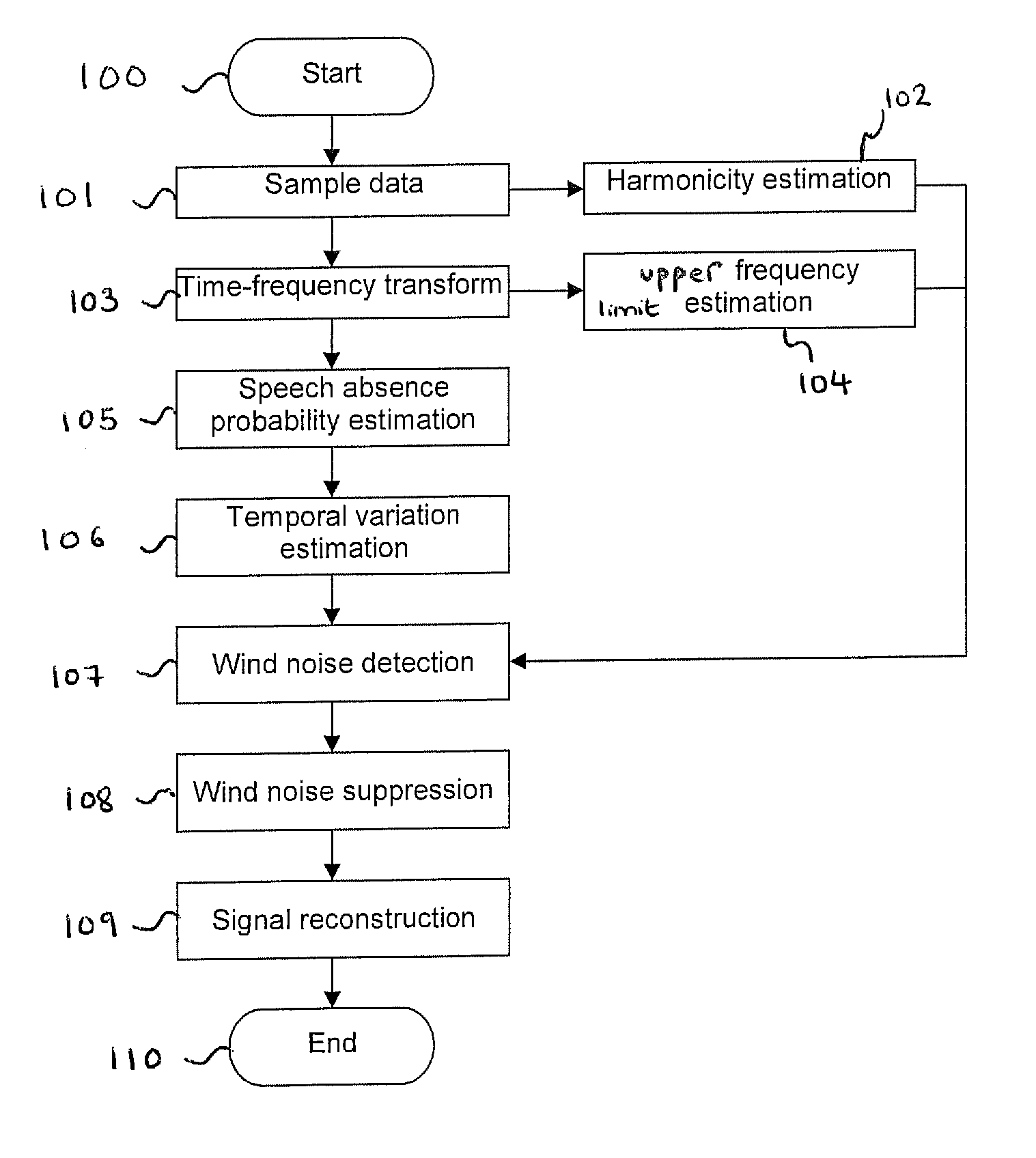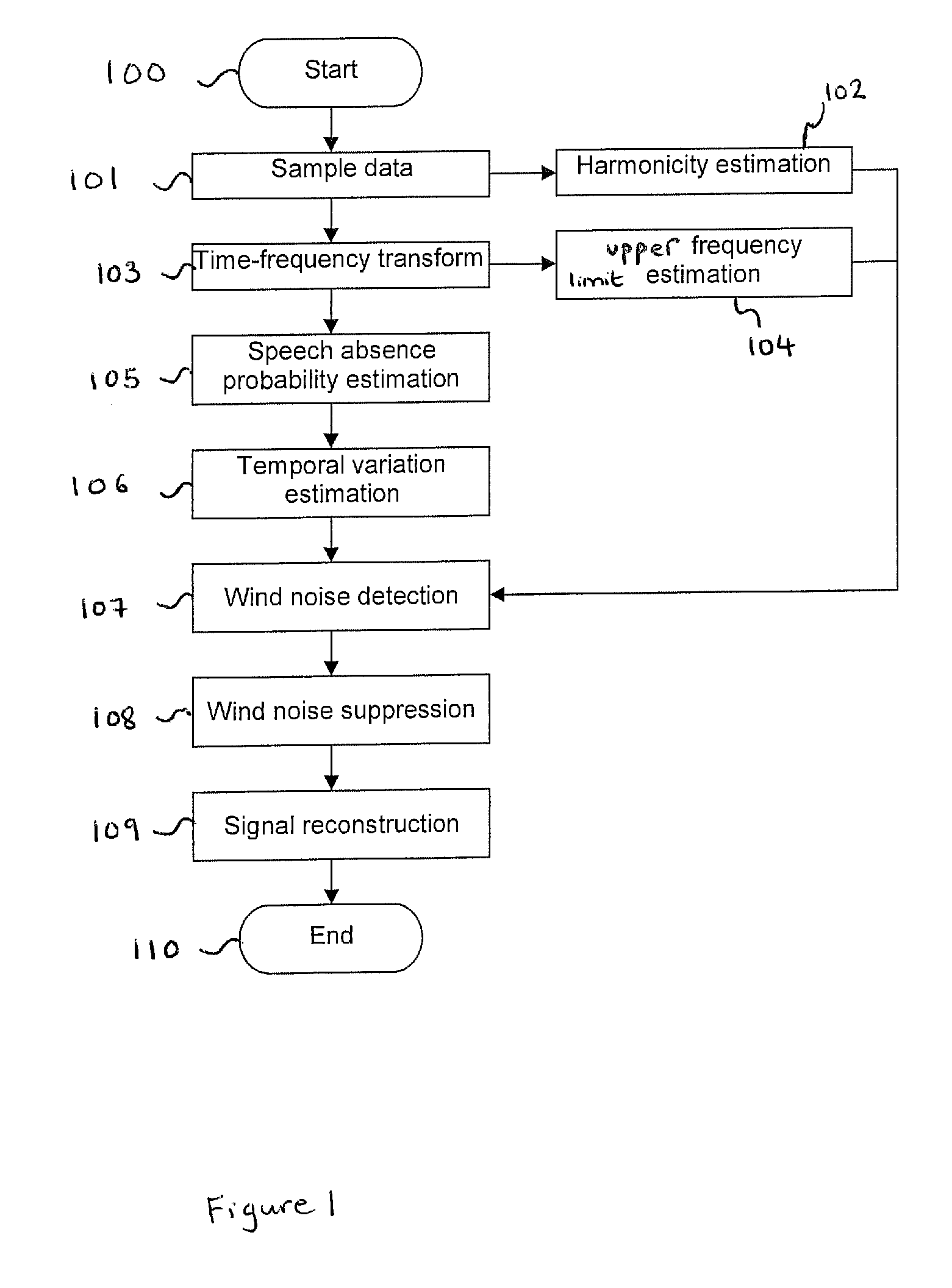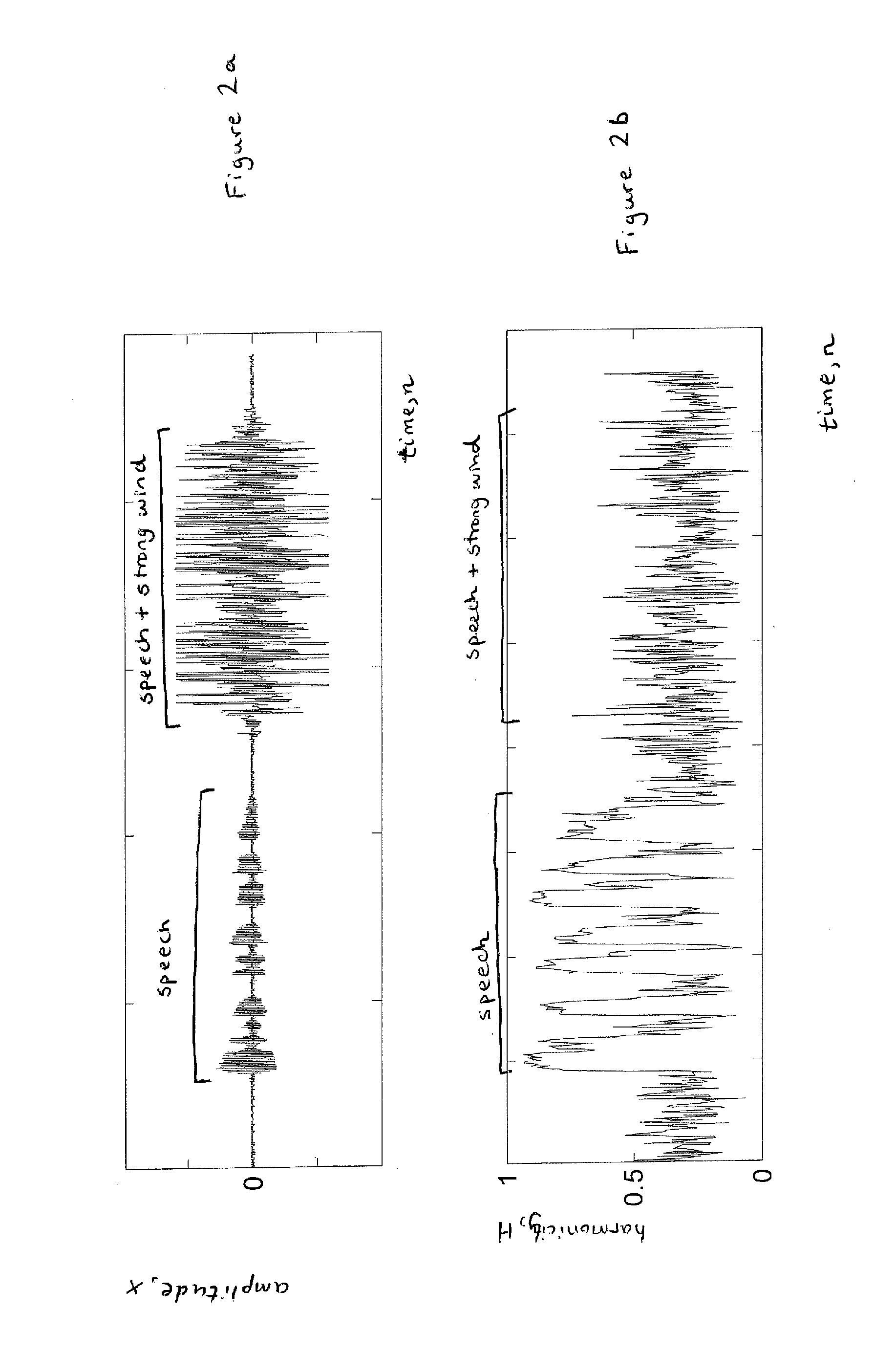Wind Noise Suppression
a technology of wind noise and suppression factor, applied in the field of wind noise suppression, can solve the problems of severe degradation of the quality of the acoustic signal, microphones not being able to operate, wind noise may be impulsive or non-impulsive, etc., and achieve the effect of suppressing wind noise and greater attenuation factor
- Summary
- Abstract
- Description
- Claims
- Application Information
AI Technical Summary
Problems solved by technology
Method used
Image
Examples
example implementation
[0078]An example implementation of the use of the harmonicity, roll-off frequency, temporal variation and speech absence probability will now be described with reference to the flow diagram of FIG. 3. The method illustrated in FIG. 3 categorises each portion of a voice signal as including signal components in one of the following four categories:[0079]1. impulsive wind noise[0080]2. non-impulsive wind noise[0081]3. non-impulsive wind noise and voiced speech[0082]4. non-impulsive wind noise and unvoiced speech
[0083]At step 300 a portion of sampled voice signal is input to the processing apparatus. At step 301 the portion is analysed to identify whether it comprises wind noise. This analysis is performed either by measuring the roll-off frequency, or by measuring the harmonicity, or by measuring the roll-off frequency and harmonicity of the signal. The roll-off frequency and / or harmonicity are measured as previously described. If the harmonicity is estimated to be lower than a thresho...
PUM
 Login to View More
Login to View More Abstract
Description
Claims
Application Information
 Login to View More
Login to View More - R&D
- Intellectual Property
- Life Sciences
- Materials
- Tech Scout
- Unparalleled Data Quality
- Higher Quality Content
- 60% Fewer Hallucinations
Browse by: Latest US Patents, China's latest patents, Technical Efficacy Thesaurus, Application Domain, Technology Topic, Popular Technical Reports.
© 2025 PatSnap. All rights reserved.Legal|Privacy policy|Modern Slavery Act Transparency Statement|Sitemap|About US| Contact US: help@patsnap.com



